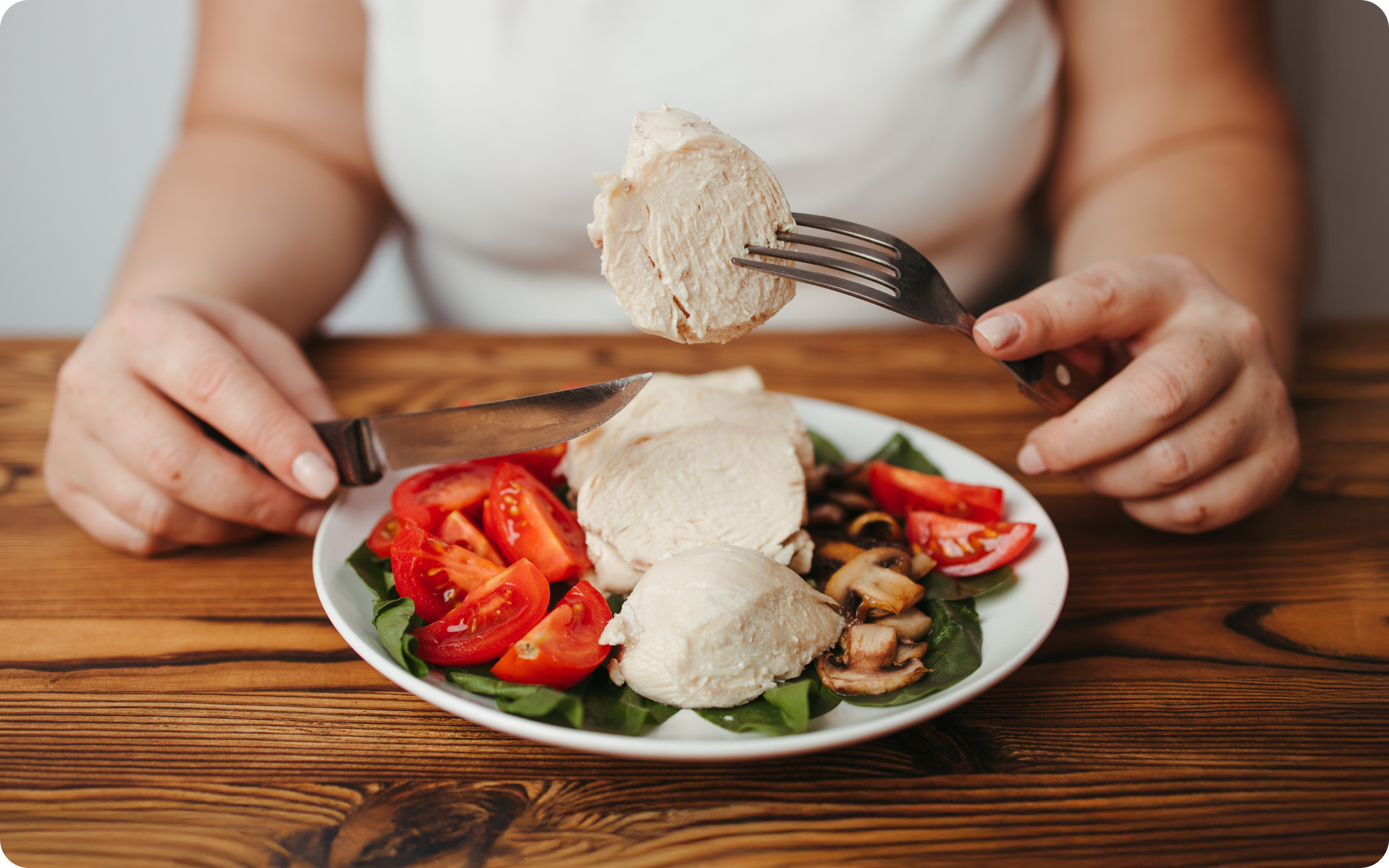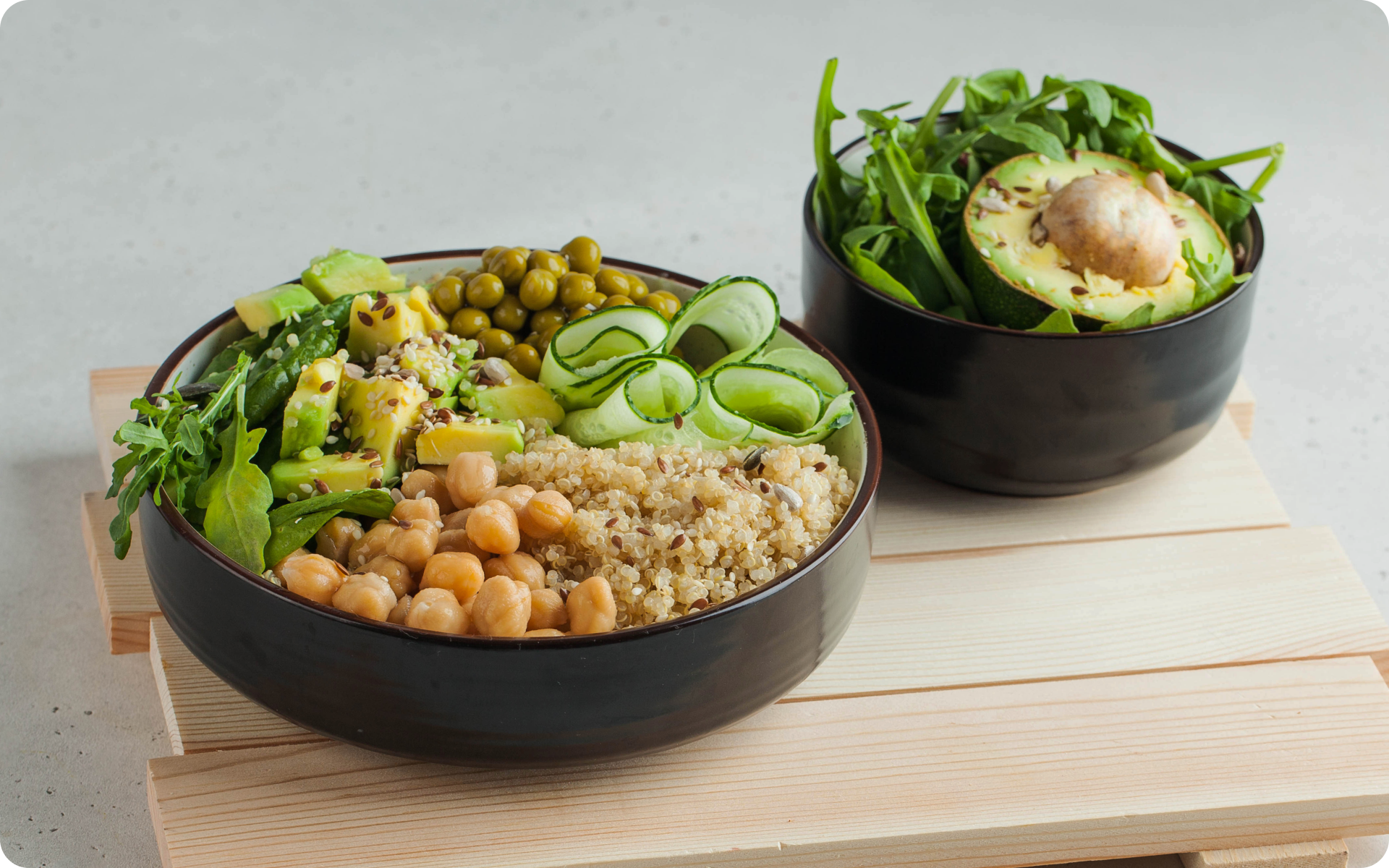Korean culture is famed for many things: K-Pop, K-Dramas, and of course, their delicious cuisine. If you’ve been trying to lose weight, you may have heard of the Korean diet or “K-diet” as a popular trend for shedding pounds.
But what exactly is this diet and how can it help with weight loss?
The Korean diet isn’t a specific meal plan or program, but rather a way of eating that follows the traditional dietary habits of Korean people. It focuses on consuming whole, minimally processed foods such as vegetables, grains, seafood, and lean protein sources such as tofu and eggs. This style of eating also includes fermented foods such as kimchi, which are known for their probiotic benefits.
Here’s everything you need to know about using the Korean diet to lose weight without feeling deprived.
What Is the K-Diet in Korea?
The traditional Korean diet is often referred to as “hansik”, which translates to “Korean food”. It has been the staple diet of Koreans for centuries and is based on the cultural principles of balance, variety, and moderation.
Generally, the K-diet can be described as a low-fat, high-fiber, plant-based diet with moderate amounts of fish and meat. It also includes fermented foods such as kimchi, soybean paste, and vinegar-based dishes. Rice is a staple in the majority of meals and is usually accompanied by various side dishes that are made from vegetables.
Unlike many fad diets that restrict certain food groups or promote extreme weight loss methods, the K-diet is focused on nourishing the body with nutrient-dense foods while still allowing for indulgences in moderation.
How Do Koreans Eat So Much and Not Get Fat?
A holistic approach to diet, lifestyle, and cultural practices contributes to the ability of Koreans to enjoy their food while also managing their weight effectively.
The Korean paradox, which is the observation that Koreans generally have lower rates of obesity and chronic diseases despite a diet that is high in salty, spicy, and fermented foods, is often attributed to these cultural practices.
We’ve identified 6 key habits of Koreans that may contribute to their ability to maintain a healthy weight:
Read More: Korean Weight Loss: Is It A Long-Term Solution?
1. Portion Control
In Korean culture, meals are typically served as an array of smaller dishes that are known as banchan. This diverse selection allows for tasting multiple food items in small quantities, which promotes mindful eating and prevents overindulgence.
Research on portion control supports this approach, indicating that smaller, varied servings can reduce overall calorie intake and increase satisfaction (1).
In contrast to Western practices of heaping food onto large plates, Koreans use smaller plates and bowls.
For example, rice is generally served in a small bowl called a bap, while soup, or guk, is presented in modest portions. This segmentation contributes to a visually fuller meal, which has a psychological impact on satiety.
Studies have shown that eating from smaller plates can trick the brain into feeling full faster, thereby helping with weight management (2).
The communal style of eating, where dishes are shared among diners, naturally encourages slower consumption. Diners are more likely to eat mindfully, paying attention to hunger cues and stopping when satisfied.
This practice of hoesik, or eating alone even within a communal setting, ensures individuals don’t rush their meals. The slower pace allows the brain to register fullness, which reduces the likelihood of overeating.
2. Focus on Vegetables
Many traditional Korean dishes are centered around vegetables, which make up a large part of the diet. These include leafy greens, mushrooms, radishes, and other seasonal produce.
Vegetables are low in calories but high in nutrients and fiber, which makes them an essential component for weight loss (3).
They also add bulk and texture to meals, increasing satiety without adding excessive calories.
For example, stir-fried dishes such as bokkeum, often use vegetables as the main ingredient with smaller amounts of meat or fish added for flavoring.
In addition to being nutritious and filling, the vibrant colors of vegetables in Korean cuisine make meals visually appealing, which contributes to a more satisfying dining experience.
Find healthy, low-calorie smoothie options in our 30-day smoothie diet blog post.
3. Limited Use of Oils and Fats
The K-diet is known for its limited use of oils and fats compared to other cuisines. Traditional cooking methods such as boiling, steaming, grilling, or stir-frying using minimal oil are preferred to deep-frying.
This practice reduces the overall calorie intake from oils and fats while still allowing for flavor and texture in dishes.
Furthermore, fermented foods such as kimchi contain healthy bacteria that helps with digestion and may contribute to improved gut health. This can have a positive impact on weight management and overall well-being (4).
Whether you’re a workout beast or just a beginner making your first foray into the world of fitness and dieting – BetterMe has a lot to offer to both newbies and experts! Install the app and experience the versatility first-hand!
4. Active Lifestyle
Koreans are known for their active lifestyle, which may also play a role in managing weight effectively.
Walking is the most popular form of exercise in Korea and is incorporated into daily routines, such as commuting to work or running errands.
Traditional practices such as martial arts, dance, or hiking are also popular among Koreans and provide opportunities for physical activity while also promoting cultural heritage.
These habits contribute to burning calories and help reduce stress levels, which can be a significant factor in weight gain (5).
Read More: Is Kimchi Healthy? The Truth About This Fermented Side Dish
5. Mindful Eating Practices
In addition to portion control, Korean culture promotes mindful eating practices that can help with weight management.
For example, it’s customary to eat slowly and chew food thoroughly, which allows for better digestion and satiety signaling.
Koreans also avoid distractions while they’re eating, such as watching TV or using electronic devices, which can lead to mindless overeating.
6. Balanced Meals and Variety
One of the key principles of the Korean diet is balance and variety in meals. This approach ensures individuals receive a balanced intake of macronutrients and micronutrients necessary for optimal health.
Incorporating a wide range of food groups in each meal also adds diversity to the diet and reduces monotony, which makes it easier to stick to healthy eating habits long-term.
This balanced approach also allows for occasional indulgences, such as fried foods or sweets, without compromising overall health and weight management goals.
In our previous blog post, 30-Day Keto Challenge, we suggested the keto diet as a weight loss method.
What Do Koreans Drink for Weight Loss?
In addition to their dietary habits, Koreans also consume a variety of drinks for weight loss, including:
1. Tea
Tea is an integral part of Korean culture, and many types of this beverage are believed to have health benefits, including helping with weight loss.
Green tea in particular is known for its metabolism-boosting properties due to the presence of catechins and caffeine (6).
Barley tea, or boricha, is another popular option and it is often consumed as a substitute for water. It has been found to reduce appetite and improve digestion while providing hydration without adding calories (7).
Mugwort tea, or ssukcha, is also believed to have weight loss benefits due to its detoxifying properties (8).
2. Fruit and Vegetable Juices
Koreans also incorporate a variety of fruit and vegetable juices into their diets, which are believed to help with weight loss (9).
For example, yulmu cha, or roasted barley tea, has been shown to have a positive effect on metabolism and may help reduce body fat percentage.
Carrot juice is another popular option that is high in vitamins and minerals while being low in calories. It can also be combined with other fruits or vegetables for added flavor and nutrients.
3. Fermented Drinks
Fermented drinks such as kombucha and kefir have gained popularity in recent years due to their potential health benefits, including weight management (4).
Koreans have been consuming fermented drinks such as makgeolli, a traditional rice wine, and dongchimi, a type of water kimchi, for many centuries. Yakult is a probiotic drink that is widely consumed in Korea and contains the bacteria Lactobacillus casei, which is known for its digestive and immune-boosting properties.
Studies have shown that probiotics can help with weight management by promoting healthy gut bacteria and reducing inflammation (10).
What Are the Disadvantages of the Korean Diet?
Some of the disadvantages of the Korean diet include:
- High Sodium Content: Korean soups and stews, which are popular components of the diet, often contain high levels of sodium. Excessive sodium intake can lead to health issues such as high blood pressure (11).
- Potential Health Risks: Despite the perception of Koreans having a lower average body weight than people in the U.S., there is a higher risk for conditions such as high blood pressure among Koreans due to dietary factors (12).
- Obesity and Cardiac Problems: Certain aspects of the Korean diet can contribute to obesity and related cardiac problems if not balanced properly (11).
- Unhealthy Food Choices: While there are many healthy elements in the Korean diet such as fruits, vegetables, and fermented foods, there are also unhealthy options that can be high in fat, salt, or calories.
It’s important for individuals who are following the Korean diet to be mindful of their food choices and strive for a balanced and varied diet to mitigate these potential disadvantages.
How to Lose Weight Fast Like Korean Celebrities
Trying to lose weight quickly can generally be unhealthy and unsustainable. According to the Centers for Disease Control and Prevention, a healthy rate of weight loss is 1-2 pounds per week (13).
However, there are some tips from Korean culture that can help you lose weight in a balanced and sustainable way:
- Stick to traditional Korean dishes such as stews and soups.
- Incorporate fermented foods such as kimchi into meals for added health benefits.
- Practice mindful eating by slowing down while eating and avoiding distractions.
- Walk or incorporate physical activity into daily routines.
- Drink plenty of hydrating beverages without added sugars, such as tea or water.
- Avoid processed or unhealthy foods, and opt for homemade meals whenever possible.
- Get enough sleep to reduce stress levels and support weight management efforts.
- Seek professional guidance from a registered dietitian or nutritionist for personalized and sustainable weight loss plans.
While it may be tempting to try to lose weight quickly like Korean celebrities, it’s important to prioritize overall health and well-being over short-term results. Remember that everyone’s body is unique, and what works for some people may not work for others. Making small changes consistently over time can lead to sustainable weight loss and overall improved health.
FAQs
Is the Korean diet good for weight loss?
The Korean diet is known for its healthy balance and variety of foods, which can be beneficial for weight loss.
Here are some specific aspects of the Korean diet that can support weight loss:
- Rich in Fiber: The Korean diet is high in fiber from vegetables, which can promote feelings of fullness and help with weight management (14).
- Low in Saturated Fat: Traditional Korean dishes are often prepared with minimal use of oils and fats, which makes the diet a heart-healthy choice for those who are looking to lose weight (15).
- Variety of Nutrient-Dense Foods: It includes a wide range of colorful vegetables and fruits, so the Korean diet provides essential vitamins and minerals without excess calories.
- Fermented Foods: Kimchi and other fermented foods that are common in Korean cuisine are known for their probiotic properties, which may benefit gut health and digestion—factors that are linked to weight management (4).
- Balanced Meals: The Korean diet emphasizes balanced meals with a mix of carbohydrates, proteins, and fats, which can help regulate appetite and prevent overeating.
We’ve discussed different ways to increase your protein intake in our 100 Grams Of Protein article.
How can you lose weight fast on a Korean diet?
Losing weight quickly isn’t recommended, as it can lead to health issues and can be unsustainable. Instead, focus on making small, sustainable changes to your diet and lifestyle for long-term weight management.
- Eat More Vegetables: Fill up your plate with a variety of vegetables to increase your fiber intake and feel satisfied with fewer calories (3).
- Moderate Portions: Pay attention to portion sizes, as even healthy foods can contribute to weight gain if they’re consumed excessively (2).
- Limit Added Sugars and Processed Foods: Stick to whole, unprocessed foods as much as possible to avoid empty calories and excess sugar.
- Stay Hydrated: Opt for water or unsweetened beverages over sugary drinks to cut down on unnecessary calories (16).
- Physical Activity: Combine a healthy diet with regular exercise for optimal weight loss and overall well-being (5).
The Bottom Line
The Korean diet isn’t a restrictive or extreme way of eating and is a balanced and holistic approach to nourishing the body.
By incorporating mindful eating practices, portion control, a focus on vegetables, limited use of oils and fats, an active lifestyle, and balanced meals with variety, Koreans are able to enjoy their food while maintaining a healthy weight.
While there may be cultural and genetic factors at play in the Korean paradox, adopting some of these habits can potentially benefit individuals who are looking to improve their health and manage their weight.
DISCLAIMER:
This article is intended for general informational purposes only and does not serve to address individual circumstances. It is not a substitute for professional advice or help and should not be relied on for making any kind of decision-making. Any action taken as a direct or indirect result of the information in this article is entirely at your own risk and is your sole responsibility.
BetterMe, its content staff, and its medical advisors accept no responsibility for inaccuracies, errors, misstatements, inconsistencies, or omissions and specifically disclaim any liability, loss or risk, personal, professional or otherwise, which may be incurred as a consequence, directly or indirectly, of the use and/or application of any content.
You should always seek the advice of your physician or other qualified health provider with any questions you may have regarding a medical condition or your specific situation. Never disregard professional medical advice or delay seeking it because of BetterMe content. If you suspect or think you may have a medical emergency, call your doctor.
SOURCES:
- Mindful Eating: The Art of Presence While You Eat (2017,nih.gov)
- What is the role of portion control in weight management? (2014,nih.gov)
- The Relationship between Vegetable Intake and Weight Outcomes: A Systematic Review of Cohort Studies (2018,nih.gov)
- Fermented Foods, Health and the Gut Microbiome (2022,nih.gov)
- Role of Physical Activity on Mental Health and Well-Being: A Review (2023,nih.gov)
- Green tea for weight loss and weight maintenance in overweight or obese adults (2012,nih.gov)
- Barley Tea: Uses, Benefits, Side Effects & More! (2024,pharmeasy.in)
- Mugwort: Health Benefits, Uses, Side Effects & More! (2024,pharmeasy.in)
- Healthy Habits: Fruits and Vegetables to Manage Weight (2023,cdc.gov)
- The Influence of the Gut Microbiome on Obesity in Adults and the Role of Probiotics, Prebiotics, and Synbiotics for Weight Loss (2020,nih.gov)
- Sodium Intake and Hypertension (2019,nih.gov)
- Dietary factors related to hypertension risk in Korean adults-data from the Korean national health and nutrition examination survey III (2011,nih.gov)
- Steps for Losing Weight (2023,cdc.gov)
- Fiber Intake Predicts Weight Loss and Dietary Adherence in Adults Consuming Calorie-Restricted Diets: The POUNDS Lost (Preventing Overweight Using Novel Dietary Strategies) Study (2019,nih.gov)
- Choosing Healthy Fats (2024,helpguide.org)
- Increased Hydration Can Be Associated with Weight Loss (2016,nih.gov)













